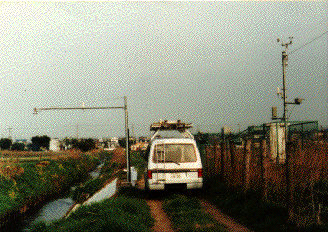
(Obsevation facility setted in Ebi river in Chiba prefectureD)
 |
Our laboratory have two types of study area:
Evi river in Chiba prefecture in Japan for small and medium size catchments that are normally the case of rivers
in Japan, and Chao Phraya river basin in Thailand for large catchment.
(Obsevation facility setted in Ebi river in Chiba prefectureD) |